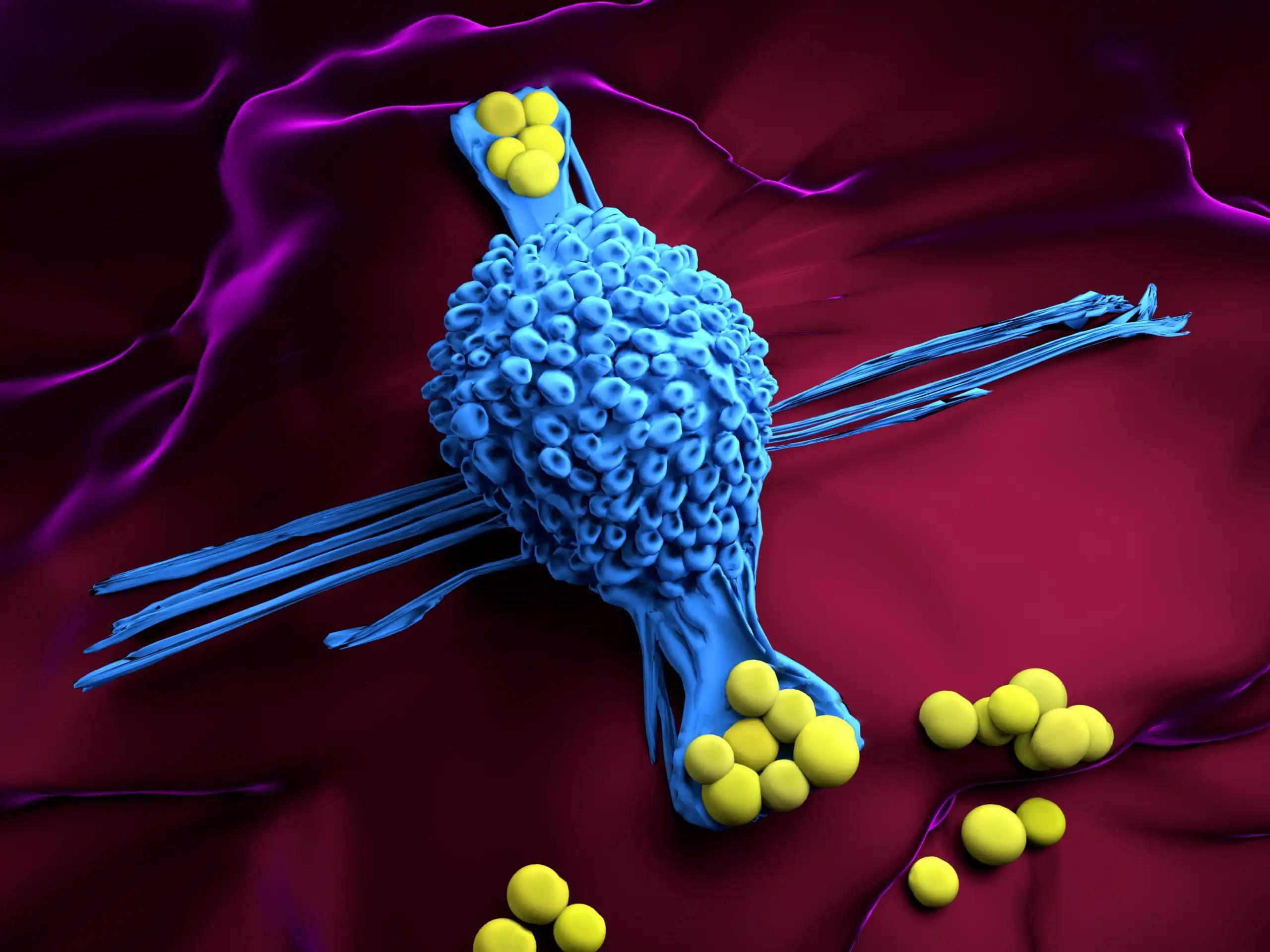KEY TAKEAWAYS
- PACIFIC-6 is a phase 2 clinical trial evaluating the safety and tolerability of durvalumab after sCRT in patients with unresectable stage III NSCLC.
- The primary aim was to assess the incidence of grade 3 or 4 adverse events possibly related to treatment occurring within 6 months of treatment initiation.
- Patients who completed sCRT and had no disease progression were enrolled to receive durvalumab (1500 mg intravenously) every 4 weeks for up to 24 months.
- The trial showed that durvalumab after sCRT had a similar safety profile to that observed with durvalumab after cCRT in the PACIFIC trial.
- The study population had a high percentage of patients with performance status >0, aged ≥65 years, and with stage IIIA disease, suggesting that durvalumab after sCRT may be a viable treatment option for a frailer patient population.
According to the results of the phase 3 PACIFIC trial (NCT02125461), patients with stage III unresectable NSCLC who have not experienced disease progression while receiving concurrent chemoradiotherapy (cCRT) should be treated with durvalumab. Due to safety concerns, many patients are deemed ineligible for cCRT. Durvalumab’s side effects after sequential CRT (sCRT) are being tested in the PACIFIC-6 trial (NCT03693300), a phase 2 study. Durvalumab (1500 mg intravenously) was given to patients every 4 weeks for up to 24 months who had stage III, unresectable NSCLC and had not progressed after platinum-based sCRT. The primary endpoint was the incidence of treatment-emergent adverse events of grade 3 or 4 within 6 months. Overall survival and progression-free survival were secondary endpoints evaluated by investigators (both according to the Response Evaluation Criteria in Solid Tumors, version 1.1).
As a whole, 117 patients were enrolled (59.8% with performance status >0, 65.8% aged ≥65 y, and 37.6% with stage IIIA disease). Patients were on treatment for a median of 32.0 weeks, with 37.6% still receiving treatment as of the data cutoff (July 15, 2021). 18% of patients experienced adverse events (AEs) of grade 3 or 4. Within the first six months after starting treatment, five patients experienced potentially related adverse events of grade 3 or 4 (incidence: 4.3%; 95% confidence interval: 1.4-9.7), including two cases of pneumonitis. All-cause grade 5 AEs occurred in 2 patients (1.7%). The maturity of survival data was low. Overall survival at 12 months was 49.6%, and PFS at 12 months was 10.9 months (95% confidence interval: 7.3-15.6). Durvalumab’s preliminary efficacy in a frailer population was encouraging, and its safety profile was similar to that observed with durvalumab after cCRT in PACIFIC.
Source: https://pubmed.ncbi.nlm.nih.gov/35961520/
Clinical Trial: https://clinicaltrials.gov/ct2/show/NCT03693300
Garassino MC, Mazieres J, Reck M, Chouaid C, Bischoff H, Reinmuth N, Cove-Smith L, Mansy T, Cortinovis D, Migliorino MR, Delmonte A, Sánchez JG, Chara Velarde LE, Bernabe R, Paz-Ares L, Perez ID, Trunova N, Foroutanpour K, Faivre-Finn C. Durvalumab After Sequential Chemoradiotherapy in Stage III, Unresectable NSCLC: The Phase 2 PACIFIC-6 Trial. J Thorac Oncol. 2022 Dec;17(12):1415-1427. doi: 10.1016/j.jtho.2022.07.1148. Epub 2022 Aug 9. PMID: 35961520.



